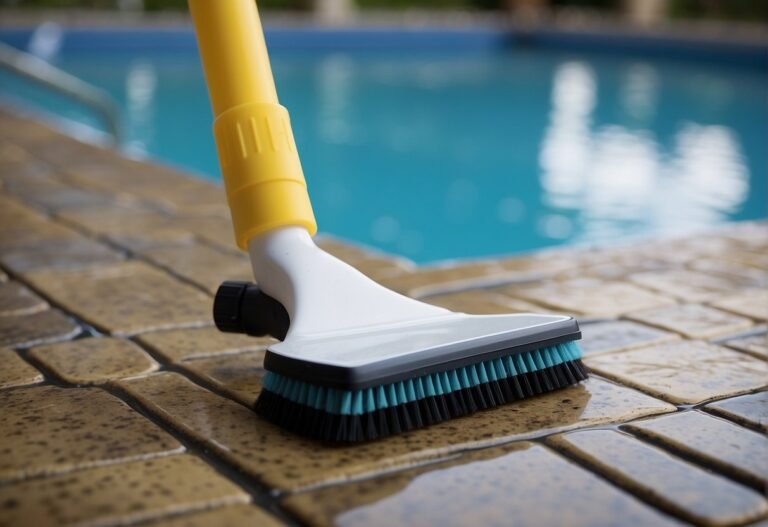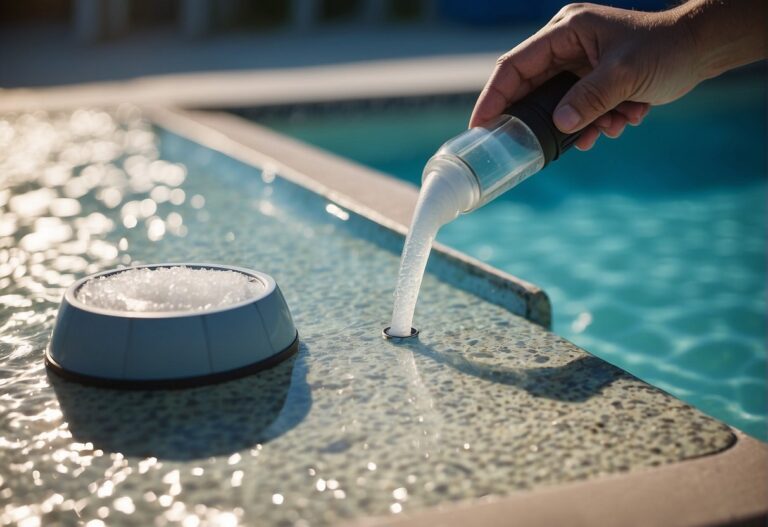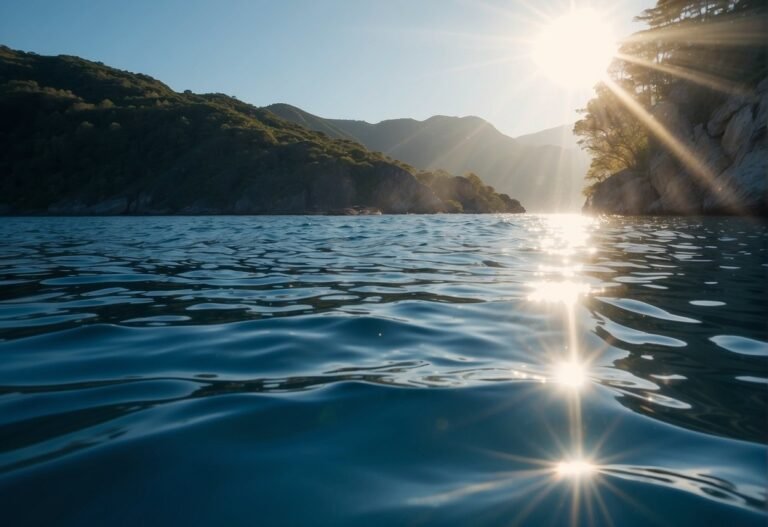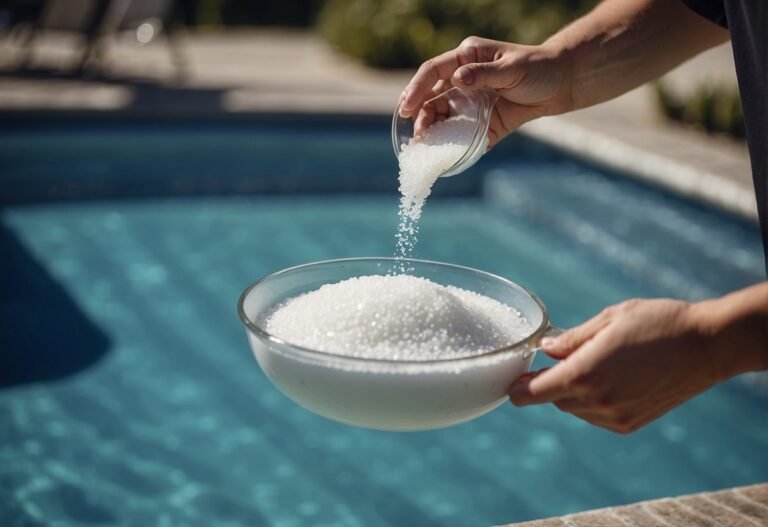Beat the heat and keep your pool chill with “How to Cool Down a Swimming Pool: Easy Step-by-Step,” where we guide you through simple, effective ways to lower the temperature of your waters for a refreshing dip, even on the hottest days.
How to Cool Down a Swimming Pool?
Pool Temperature Dynamics
Your pool’s temperature is a balancing act influenced by external factors such as sun exposure, ambient temperatures, and pool usage. During the day, sunlight beats down, raising water temperature, while evaporation and nocturnal cooling can bring a refreshing reprieve at night.
Wind and shade from nearby trees can also play a substantial role in moderating the temperature. Understanding these dynamics is the first step towards mastering the art of pool cooling.
- Evaporation: Uses the principle of heat loss as water vaporizes.
- Nocturnal Cooling: Takes advantage of cooler night-time air temperatures.
- Shade & Wind: Limit direct sun exposure and enhance evaporation rate.
Adjusting Pool Temperature Without Equipment
No fancy gear? No problem! You can naturally influence your pool’s temperature using simple techniques:
- Water Circulation: Run your pool’s pump during the cooler hours, especially at night, to capitalize on nocturnal cooling and enhance evaporation.
- Manual Cooling:
- Partial Water Replacement: Drain a small percentage of your pool’s water and refill with colder water from your hose. This can be a quick fix for a too-warm pool.
- Increase Evaporative Cooling: Use a spray attachment to create a fine mist over the surface of your pool, amplifying evaporation.
Remember, while adding cold water is a quick solution, consider the water costs and adjust pool chemicals accordingly. Evaporative cooling is your pool’s natural ally; enhance it by encouraging wind to sweep across the surface or by adding shade during the hottest parts of the day. With these simple techniques, you’ll keep your pool water temptingly crisp throughout those scorching summer months.
Cooling Systems and Equipment

Active Cooling Techniques
Heat Pumps: A reversible heat pump is a fantastic investment for your pool. Not only do these units cool your water during the hot months, but they can also heat it when things get cooler, making them extremely versatile. By using refrigerant, heat pumps extract warmth from the water and transfer it to the air, considerably lowering your pool’s temperature.
Solar Panels: While traditionally used for heating, solar panels can be part of a cooling strategy too. How? By circulating pool water during cooler night hours, you can take advantage of the drop in temperature to dissipate heat, leaving your pool cooler by morning.
Pool Cooling Equipment
Pool Chiller: Pool chillers work by pulling heat from the water. They are an essential add-on to keep the water pleasant during peak heat times. Equipped with an evaporative cooling system, they’re effective and energy-efficient.
Evaporative Coolers: These coolers use the simple principle of evaporation, harnessing it to cool your pool water effectively. As water evaporates, it absorbs heat from the surroundings, which includes your pool water, resulting in a cooler swimming environment.
Pool Cooler Types:
- Chillers: A must-have for consistent cooling.
- Pool Coolers: Circulate cooler air and reduce water temperature.
Why Care about Equipment?
- Efficiency: The right equipment saves on electricity.
- Comfort: Enhances your swimming experience.
- Versatility: Some systems can cool and heat.
Enhancing Pool Environment

Natural Cooling Solutions
Incorporating water features such as fountains or waterfalls can create a stunning focal point while actively cooling your pool water. The process is simple: as water circulates through the fountain or waterfall, it gathers air, which helps dissipate heat when the water mixes back into the pool.
Adding a pool fountain can be both visually pleasing and functional, as it sprays water into the air, aiding in cooling through evaporation. Similarly, an aerator attachment works wonders by introducing fine water droplets into the air, enhancing evaporative cooling effects and improving airflow above your pool.
Pool Landscaping and Design
Your pool temperature can be significantly affected by the landscaping around it. Planting lush vegetation and plants nearby can provide natural shade, reducing the surface temperature of the water. However, be strategic with your landscaping to not obstruct natural airflow, which is essential for cooling. Consider options that combine form and function, such as:
- Shade sails: Positioned above the pool, these add a modern touch and create areas of shade to keep your water cool.
- Pool Landscaping: Use plants that are known to provide thicker canopies while allowing air circulation.
FAQ:
How do I lower the temperature of my pool?
Lower the temperature of your pool by running the pump at night, using a pool cooler, or adding a water feature for evaporation cooling.
How do I cool down my swimming pool?
Cool down your swimming pool by installing a fountain or aerator, shading the pool, or using ice to lower the temperature temporarily.
What is the cheapest way to cool a pool?
The cheapest way to cool a pool is by using evaporation methods like running the pump at night and employing water features such as fountains.
How do you make a pool cooler?
Make a pool cooler by increasing water circulation with aerators, shading the area, or investing in an energy-efficient pool cooling system.






